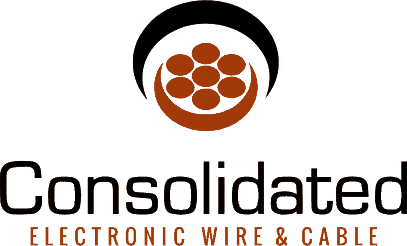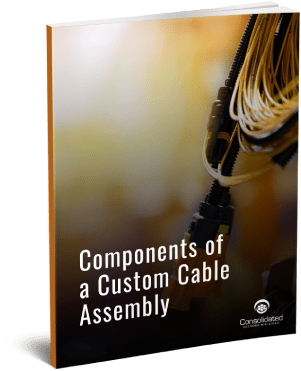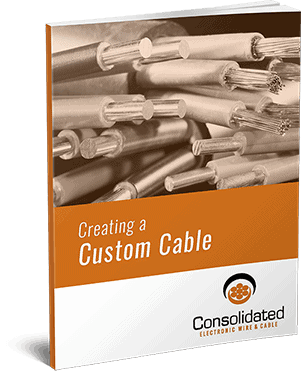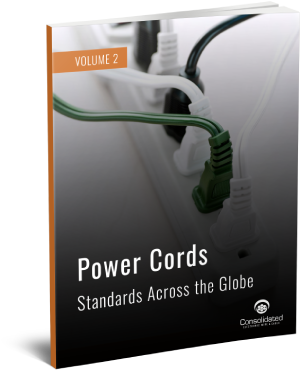Coaxial cable connectors connect cables to devices while providing uninterrupted shielding around the cable. There are many different styles of coaxial cable connectors for digital, video, audio, radiofrequency (RF), and microwave applications. Broadcasting and telecommunications, networking infrastructure, and military sectors all rely on specialty coaxial cable connectors for uninterrupted connectivity. While not all RF connectors are coaxial, all coaxial connectors work with radiofrequency applications.
Learn more about the most common types of coaxial connectors and how to pick the right ones for the best long-term performance. We also provide answers to commonly asked questions from procurement teams that need to order the right cables for specialty applications.
Table of Contents:
- Understanding Coaxial Connector Basics
- Coaxial Cable Connector Types and Applications
- How to Choose the Right Coaxial Cable Connector Type
- Frequently Asked Questions (FAQs)
Understanding Coaxial Connector Basics
Coaxial cable connectors connect cables to devices, maintaining shielding around the cable to minimize interference or signal loss. Impedance opposes alternating current to ensure a clearer signal with fewer reflections and less signal loss across a long distance. Most coaxial cable connectors have a 50-ohm impedance or a 75-ohm impedance. Ohms measure the level of resistance to electrical flow, and both offer different advantages based on the type of signal.
Coaxial connectors can also have different coupling mechanisms that physically attach or fasten to cables in specific ways. Common connector fastening options include:
- Bayonet
- Blind mate
- Braces
- Latching
- Thread
Gender of Connectors
Coaxial cable connectors come in three main genders or fastening orientations: male connectors with a protruding pin, female connectors with a matching receptacle, or flush-mounted non-gendered connectors. It’s important to select connectors that mate with any existing hardware so the new installations integrate smoothly with existing cable systems.
Coaxial Cable Connector Advantages
Coaxial cable connectors offer unique advantages, including:
- Reliable signal transmission
- Long-term durability
- Versatility across different types of coaxial cables
- Simple installation
Coaxial Cable Connector Types and Applications
BNC
Originally designed for military use, the Bayonet Neil-Concelman (BNC) coaxial connector is a miniature-to-subminiature RF connector used for quick connect/disconnect in RF equipment, test instruments, radio, television, and video signal. BNC connectors contain two bayonet lugs for a twisting interface on the female connector and are best suited for frequencies below 4 GHz, as connectors lose mechanical stability as they get closer to 10 GHz.
TNC
The Threaded Neil-Concelman is the threaded version of a BNC connector, that performs better microwave frequencies than BNC connectors. TNC connectors are weatherproof, miniature units that operate up to 12 GHz and are commonly used in cellular phone and RF/antenna connections to resolve leakage and stability issues.
SMB
Subminiature version B connectors are smaller versions of SMA connectors and provide superior electrical performance from DC to 4 GHz. SMB connectors are one of the most popular RF/microwave connector variations for industrial and telecommunications equipment and offer a simple snap-on coupling design for semi-rigid cables with infrequent connections.
7/16 DIN
The 7/16 DIN (Deutsches Institut für Normung) connector is a threaded RF connector for high-wattage transmissions in cellular networks, antenna systems with multiple transmitters, and defense applications. It can be used at up to 7.5 GHz and requires a wrench for tightening. The connector’s name refers to the 7-mm inner diameter of the female inner contact and the 16-mm inner diameter of the overall outer contact.
QMA
QMA connectors are the quick-lock and quick-disconnect variation of SMA connectors and feature the same internal construction. Offering faster and safer coupling and excellent performance in RF connections, QMA connectors are ideal for industrial and communications applications, as well as cable wiring, assembly, and repair.
MCX
Micro coaxial connectors are small-form-factor connectors that are ideal for applications with space, size, or weight restrictions. Featuring a 30% smaller outer diameter than SMB connectors, MCX connectors operate between DC and 6 GHz in wireless, GPS, TV tuner cards, RF hardware, and digital cellular applications. MCX connectors also have a snap-on coupling design for simple, tool-free installation.
RCA
The Radio Corporation of America (RCA) connector, also known as a cinch connector, was originally designed for audio signal transmission but is now widely used in video, as well. Sometimes called A/V jacks, these cables are commonly recognized as the red, white, and yellow cords that plug into the back of televisions. Each of these cables features a male connector surrounded by a ring.
F-Type
These connectors work best for over-the-air television and RF signals in residential applications. F-type connectors have a threaded fastener that can connect cables to satellite receivers, cable modems, and televisions.
N-Type
N-type connectors join RF coaxial cables with a threaded fastener. They can handle a wide frequency range, including lower ranges of microwaves. While F-type connectors work well in residential applications, N-type connectors work well for commercial uses.
How to Choose the Right Coaxial Cable Connector Type: Key Considerations
It’s important to choose the right coax connector type to preserve a strong signal across the required distance and protect the signal from interference, environmental damage, and other factors. Each coaxial cable connector works best for different types of signals, frequency ranges, and end uses. By comparing all the options, you can ensure better long-term performance and signal quality in any system.
Some of the factors to keep in mind as you compare different connector products are:
- Environmental factors such as ambient humidity, temperature, and vibration
- Cable type and size
- Compliance with applicable safety and industry standards
- Cost
- Coupling or fastening mechanism
- Frequency range and bandwidth
- Impedance matching
- Power handling capabilities
Frequently Asked Questions (FAQs)
Why Choose Consolidated Electronic Wire & Cable?
Consolidated Electronic Wire & Cable has been building high-quality electronic components for over 100 years. We offer an extensive inventory of electronic wires, cables, wire harnesses, power cords, and molded assemblies. Our production teams can work with a wide array of materials, custom requirements, and design parameters to create robust connectors that meet or exceed regulatory requirements. As an ISO 9001:2015 certified company, Consolidated Electronic Wire & Cable is a one-stop shop for standard connectors, custom production, and precision manufacturing.
We utilize a total quality management (TQM) system throughout the manufacturing process to ensure final products meet all customer specifications and agency approvals. For military applications, MIL-DTL-17 is the main governing standard for coax cables, while MIL-PRF-39012 and MIL-STD-348 outline the requirements for coaxial connectors. Precision coax connectors for critical calibration and test applications must meet IEEE 287 standards.
Contact Our Experts for Your Coaxial Cable Connector Needs
Consolidated Electronic Wire & Cable is a trusted provider of coaxial cable connectors and electronic components. We can produce standard, specialized, and custom connectors for any cable system or application. Contact us today for expert assistance selecting the right cable connectors for your system, or request a quote to start your order.




 () Quote Cart
() Quote Cart




